
Australia is a land like no other. We’re an ancient place, isolated at the ends of the earth and sharing little in common geographically with the rest of the world. Cold Antarctic winds blow across endless deserts. Snow-capped mountain ranges climb to the heavens within cooee of the beach. And some of the largest sand islands in the world are within sight of rainforests so ancient they predate the seven seas.
As beautiful as this place is, and as privileged as we are to call it home, it’s also a harsh, unforgiving land. Manufacturers from all across the world spend millions for the opportunity to test their prototype 4x4s in our land. This country is the real deal.
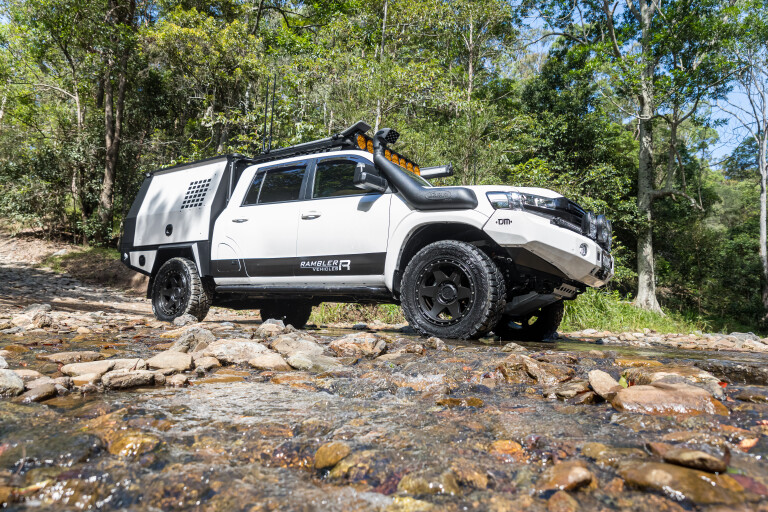
It’s for this reason we’re held in high regard the world over for our big touring builds. Four-wheel drives built with decades of experience on not only what can survive the harshest country in the world, but what can do it comfortably.
For those lucky enough to live in Queensland’s southeast, a local shop under the name Rambler Vehicles is aiming to turn that wealth of knowledge into turnkey custom 4x4s ready to take on any terrain. The stunning 200 Series LandCruiser you’re looking at is its latest build and arguably one of its best.
V8 homage
Signing on the dotted line for a 2021 LC200, owner Kris set out to build one of the last of the V8s into a rolling billboard for what Rambler Vehicles can do.
As good as the wagons look from stock, it was never going to fit the bill for a Rambler build. Step one was rolling the 200 to the nearby ASG4X4 for one of its tried and tested dual-cab conversions.
The wagon was sliced and diced with a new rear wall stitched in just behind the rear doors and some clever toolboxes filling in where the wheel arches used to be. The wheelbase was bumped out 650mm longer for better weight distribution too.

With the wagon converted to a dual cab, Rambler set about giving it a solid foundation that’d cope with the terrain it’d be travelling through. Riding 3-inch higher than stock, a set of TJM XGS springs up front are wrapped around a set of matching TJM Pace Remote Res Shocks. In the rear, a second set of the remote reservoir TJM Pace shocks have been fitted, although this time there’s no coil springs in sight.
A full below rear-end set-up from Airbag Man has replaced the steel springs, giving a huge boost in ride quality and also allowing easy adjustment of rates to suit the load when touring or towing. The newfound real estate in the wheel arches has allowed Rambler to shoehorn in a set of 35-inch Toyo Open Country RTs.
They’re wrapped around a set of Con 10 alloy wheels from Method and punch in at an impressive 20-inch diameter. The larger diameter provides better on-road handling, while the 35-inch tyre ensures there’s plenty of sidewall flex for off-road situations.
Engine enhancements
To keep the whole thing motoring down the road better than stock, Rambler has installed some much-needed upgrades under the bonnet. Starting with a Safari Armax snorkel, the twin-turbo 4.5L V8 diesel is able to suck in all the air in the world. After the twin turbos compress the incoming air, a PWR intercooler up top drops intake temps giving an even denser intake charge.
From here, Bayside Performance Services has tweaked its magic on the ECU to eke out more power before a Legendex exhaust system runs dual three-inch pipes from the turbos into a single four-inch dump out the rear.
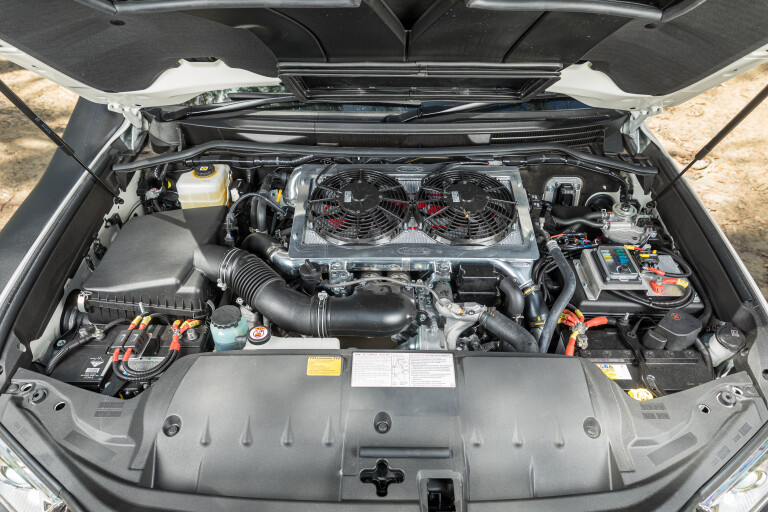
The stock automatic transmission remains in place, but it’s copped a similar treatment. A Wholesale Automatics transmission cooler up front helps keep temps down, while a Nomad valve body pairs with a transmission tune to handle the extra power and firm up those gearshifts. A torque converter lockup kit was added too, to aid with engine braking and drop RPMs at cruising speeds.
With the mechanics sorted, Rambler set to work decking the big Cruiser up with every accessory you could ever desire doing the big lap. Up front, a full suite of TJM armour has been spec’d up; the Venturer bar protecting against animal impact but also serving as a home for a TJM 12,000lb winch, while matching TJM side-steps armour up the flanks.

Ensuring there’s more than enough light for even the longest outback highway, no less than 14 forward-facing driving lights have been fitted. All sporting the Lightforce logo are eight amber-coloured Venom lights fitted on top, two HTX and two Genesis lights taking pride of place on the bar, with two smaller light bars providing a flood pattern.
Spinifex classic
Moving rearwards and the 200 sports the go-to Rambler canopy with a Spinifex Manufacturing Midi body. The ¾-canopy allows easy access to the dual spares on the back, while still providing bulk storage on the inside. On the nearside, a full kitchen set-up fills out the box.
A 130L Bushman’s upright fridge butts up against the headboard, while a pull-out pantry fits in next to it. There’s a full Bluetooth stereo install, pie oven, coffee machine and even a slide-out induction cooker tucked underneath.
There’s also a monster electrical system, ensuring all the gadgets and gizmos stay running, no matter how long you spend crossing the desert.
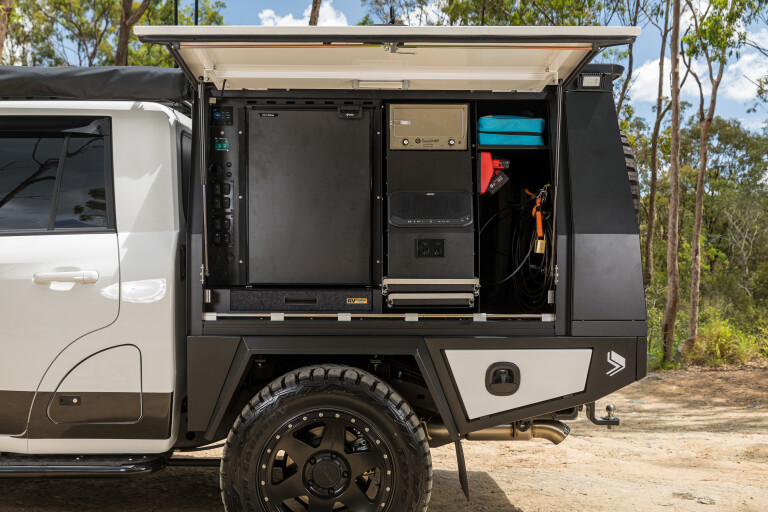
A Victron 240V multi-channel charger is the brains of the system. It feeds a 200amp/h Korr Lithium battery when parked up at home or plugged in at a caravan park. An Enerdrive DCDC charger keeps the battery topped up on the road, with a matching Enerdrive 2000W inverter spitting out usable power on the other end.
A TJM Dual Battery System up front ensures the big Cruiser can jump-start itself in the middle of nowhere too, a handy feature for solo travellers. There’s ample room to stow bulky items in the offside compartment, with any overflow finding a home on the dual Rhino-Rack platforms up top.
On the inside, Rambler has focused on building a cohesive interior, rather than throwing accessories everywhere they’d fit. First things first, the seats have been rebolstered and wrapped in Nappa leather to ensure drivers arrive at their destination feeling a million bucks. A Cel-Fi Go, RV Wi-Fi, and Uniden UHF arrangement has been installed for reliable communications, while an Alpine stereo incorporates off-road mapping and upgraded speaker componentry.
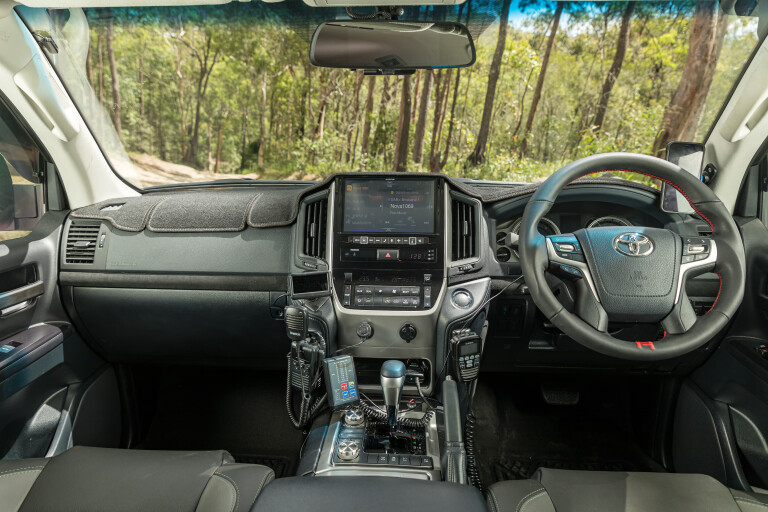
If it seems like you’ve heard of most of these modifications before, there’s good reasons why. Rambler isn’t attempting to reinvent the wheel here, the company is attempting to polish it, hone it down to the must-haves and make it easier than ever for would-be adventurers to explore this country, knowing the vehicle they’re driving is purpose built for the job.
It’s a growing trend of bona fide tourers and we’re stoked to see more people out exploring this unique land, and expecting to see more and more of them doing it in a Rambler.
Remote work
Go back 10 years and remote reservoir shocks were something you’d find in fancy off-road racers. Real tourers used big-bore shocks. So why are we seeing more and more tourers with remote reservoir shocks, and what’s the big difference between the two competing technologies?
It all comes down to sheer volume. The way a shock absorber absorbs shocks is by running oil through a valve. By controlling the flow of the oil through the valve you can stop the 4x4 bouncing around. Simple.
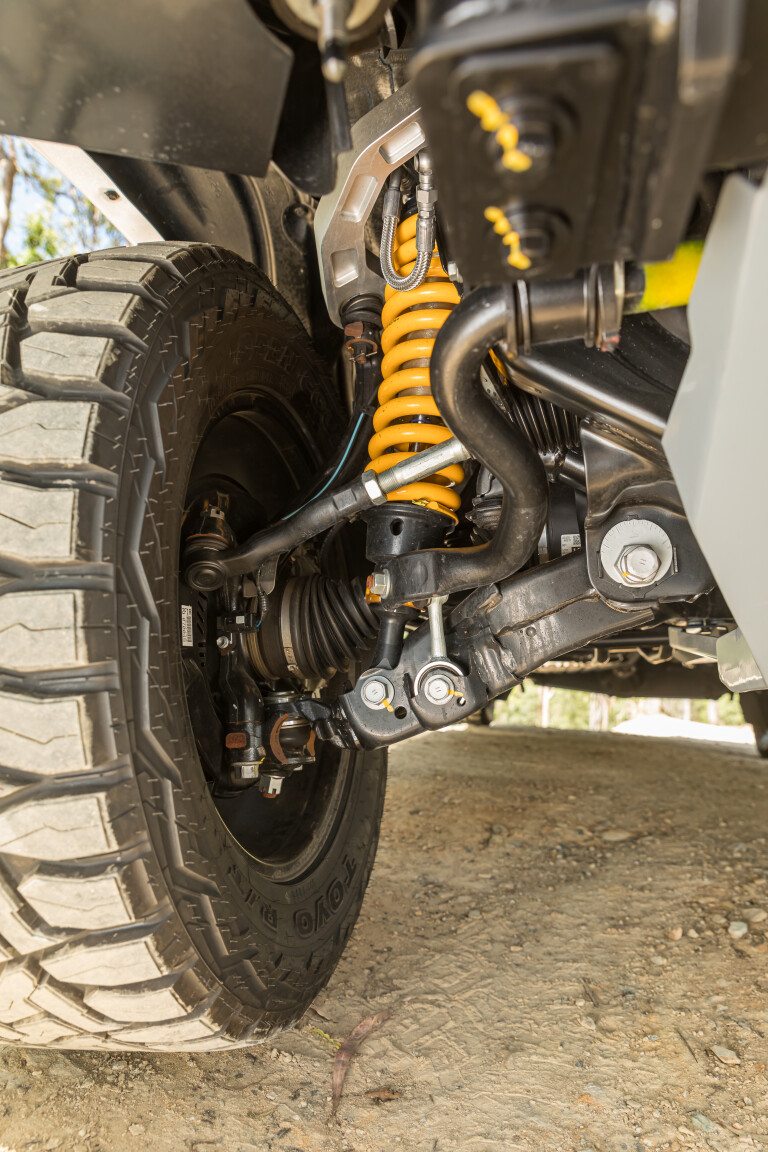
The problem is, every time you force the oil through the valve the oil heats up a little. It’s not an issue around town, or with slow rock-crawling, but go hit the corrugations and your shocks will quickly heat up to the point the oil will begin to thin out or even turn to foam and pass through the valve easier. The result is called shock fade and gives you a less effective shock, right when you need it most.
External reservoir and big-bore shocks both aim to combat this by increasing the amount of oil in the shock, making it take longer to heat up and prolonging the abuse they can handle before shock fade sets in. Remote reservoir shocks simply add more oil than a big-bore can, and by storing it away from the main body of the shock it’s able to stay cooler for longer.

COMMENTS